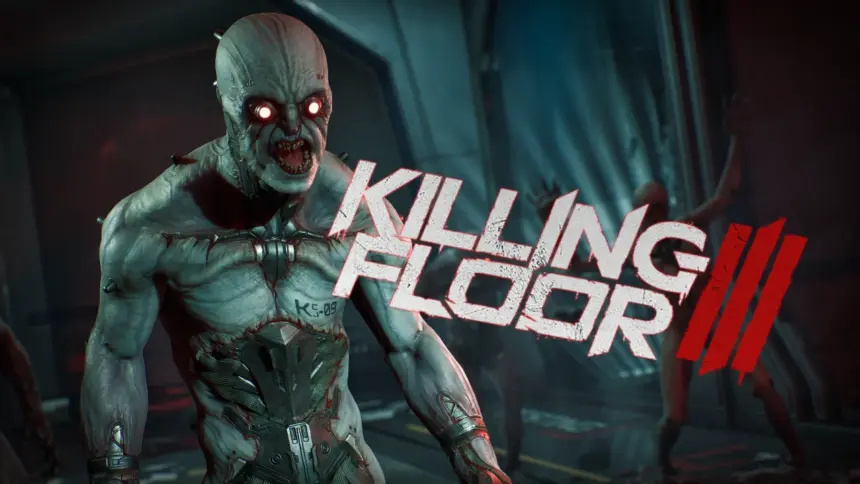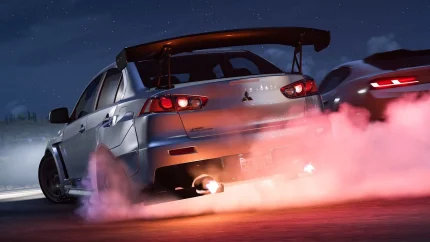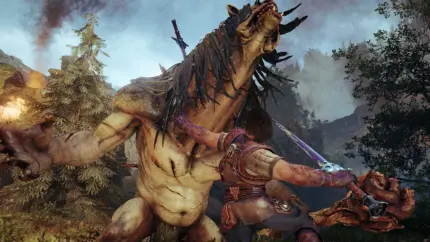The closed beta of Killing Floor 3 has recently ended and the game is now in the starting blocks to see the light of day in just over a month. After my first impressions of the beta, I am divided. According to Tripwire Interactivethe game's developer, the beta was based on a build several weeks old, which means that no more groundbreaking changes are to be expected before the release.
But the question arises: Is Killing Floor 3 a hit or a flop? The answer is: neither. For me, the game is in the midfield - with some positive approaches, but also clear weaknesses and a noticeable loss of what made the series special.
The new class system: more depth and individualization
A striking highlight of Killing Floor 3 is the revised class system, which has more weight and variety compared to its predecessors. The developers already relied on classes in the predecessors, but this time the system feels much deeper. Each class now has a unique ultimate ability that, when used correctly, can make the most of even the most desperate situations. This not only adds tactical variety, but also an extra dimension to character development.

I was also pleasantly surprised by the accelerated progress. Whereas in previous games in the series you only unlocked minor improvements every few hours, you now receive continuous experience points that boost your progress in the form of new skills or improved characteristics. This allows players to optimize their classes more quickly and to better stand their ground against the ever-increasing hordes of monsters. This constant progress not only contributes to immersion, but also motivates players to deepen their gaming experience.
An arsenal of weapons that inspires - but not without its pitfalls
The weapon system in Killing Floor 3 is a step in the right direction. It is somewhat reminiscent of the loadout system from Call of Dutywhere you put together your own weapons and equipment to find the best possible combination for your play style. A particularly positive feature is that weapons are divided into different levels of rarity, which makes them not only a strategic element but also a reward system. To unlock weapons and upgrades, you have to earn DOSH, the in-game currency. However, this currency is limited from the start, which makes getting started a little more challenging.
The ability to modify weapons with advanced attachments is also a nice new feature. These attachments are unlocked after successful rounds and can be improved with materials dropped by defeated opponents. This creates a constant dynamic and the feeling of always being better equipped. Nevertheless, the question remains as to how balanced this system will be in the long term - especially once the game has been upgraded with microtransactions, which was already clearly evident in the beta at least.

The loss of charm of the hub world
One of the biggest setbacks in the beta was the hub world. It seems extremely sparse and uninspired. Apart from a few stations representing the different game modes, there is little to create a real atmosphere. Even more disappointing was the impression that the individual quarters of the game characters seem to have no deeper meaning. What in Killing Floor 2 was still a refreshing aspect, now seems to be just a functional menu.
It becomes worrying when you see the already functioning microtransactions and the Season Pass. Although it was only a tiny taste in the beta, the concern that these elements could play a bigger role in the full version remains. It would be a shame if the game were to lose the character and atmosphere that made its predecessors so popular due to these commercial elements.
Maps and opponents: repetition instead of innovation
Three maps and two bosses were playable in the beta. Even if the enemy design stands out positively, it has a slight hint of a "new edition" overall - without, however, achieving the striking freshness and innovation of the first parts. The maps themselves offer more vertical elements, but the charm of the original maps has been lost. One map takes place on the streets of a large city, another on a military site and the last in a research facility. But instead of feeling unique, the maps feel like sections of a single, unexciting environment. All the maps share the same look, giving the impression that they have simply been cut out of a larger area. The lack of visual variety unfortunately drags the immersion down.

Another point that bothered me personally is that the classes are tied to specific characters. You can no longer simply choose your favorite character and combine it with the desired class. Tripwire claims that this is supposed to promote cooperation by making it easier to recognize the roles of your fellow players. But in my eyes, this seems more like an unnecessary restriction that could disrupt the flow of the game. Especially since there was already a simple solution in the previous games: a class symbol next to the player's name that was even visible through walls. This change could have a negative impact on the gaming experience in the long term - even though there were already various skins in the game in the beta that made it even more difficult to identify the characters.
Potential, but not yet fully developed
Despite all these criticisms, there is also hope. Tripwire has announcedto take both praise and criticism seriously and to work on the problems mentioned. This shows that the developers are willing to further optimize the game and possibly make the necessary adjustments to improve the game. Killing Floor 3 into a well-rounded experience. It remains to be seen how the game will develop until its release and whether the weaknesses mentioned will be rectified. Fans of the series can still look forward to some exciting new features - even if the charm and identity of the series have been lost to some extent.



